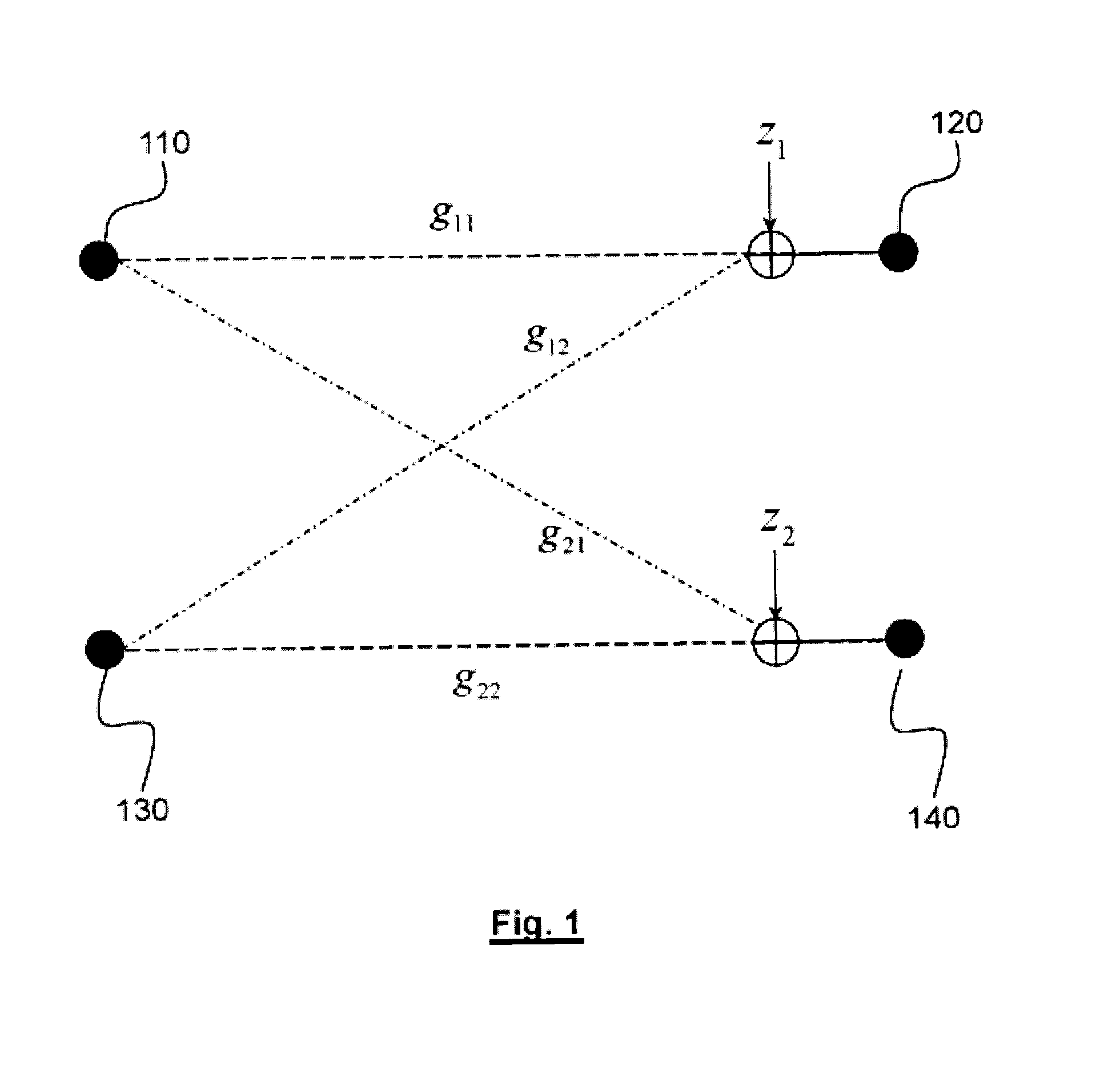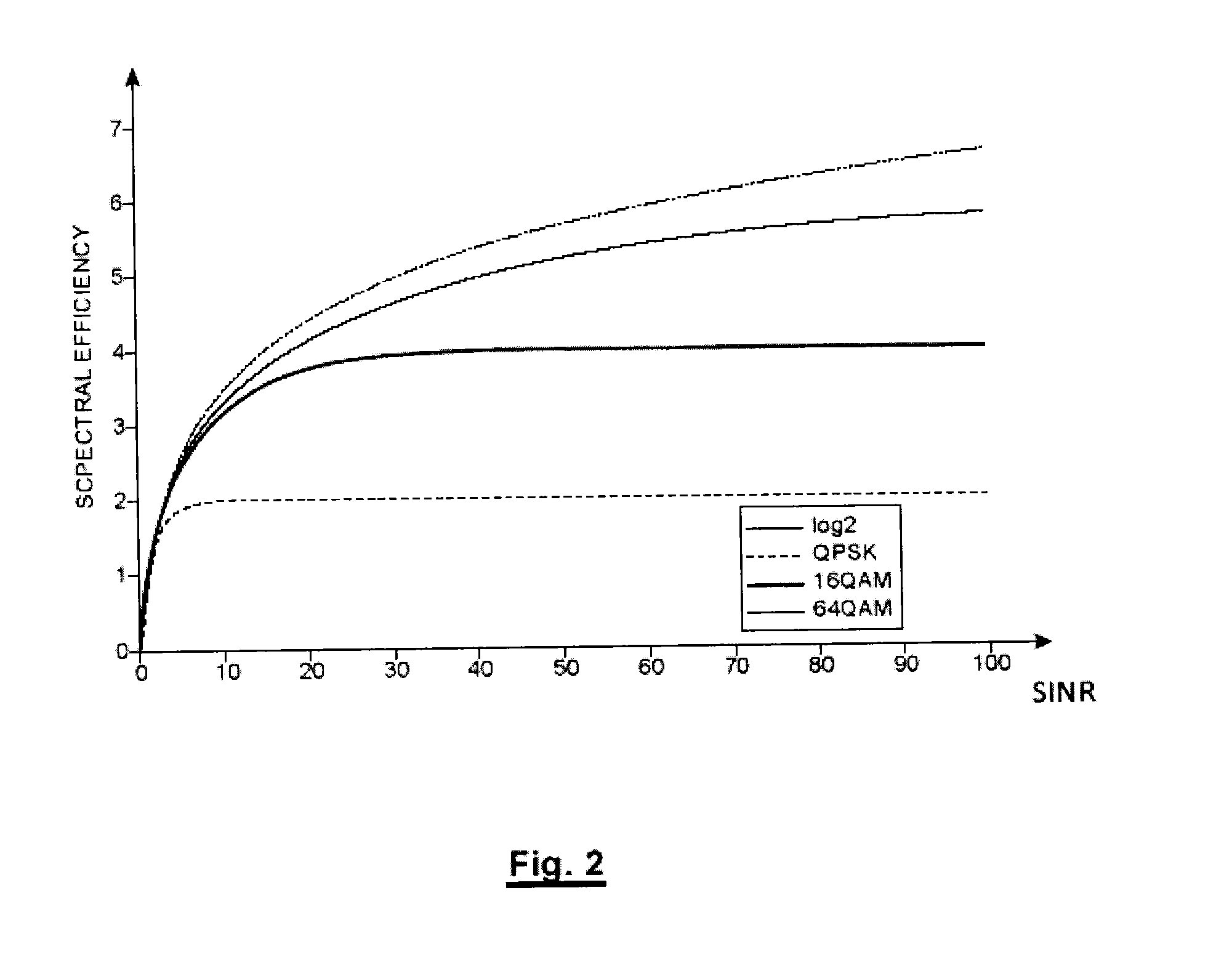Link adaptation method supervised by the selection of an interference regime
a link adaptation and interference regime technology, applied in the field of wireless telecommunications systems, can solve the problems of insufficient use of resources, ineffective transmission resource management, and interference generated by other sources
- Summary
- Abstract
- Description
- Claims
- Application Information
AI Technical Summary
Benefits of technology
Problems solved by technology
Method used
Image
Examples
first embodiment
[0029] the determination of the modulation and encoding regime for the first, second link, respectively, is done in a centralized manner by a control node, said control node indicating the regime thus determined to the first, second transmitting terminal, respectively.
second embodiment
[0030] the determination of the modulation and encoding regime for the first, second link, respectively, is done by the first, second receiving terminal, respectively, the latter transmitting the regime thus determined to the first, second transmitting terminal, respectively.
BRIEF DESCRIPTION OF THE DRAWINGS
[0031]Other features and advantages of the invention will appear upon reading the preferred embodiments of the invention given below in reference to the appended figures, in which:
[0032]FIG. 1 diagrammatically shows two interfering communications between a first transmitter-receiver pair and a second transmitter-receiver pair;
[0033]FIG. 2 shows the spectral efficiency as a function of the signal-to-noise plus interference ratio on a link, for different modulation regimes;
[0034]FIG. 3 shows an interference diagram between the two communications of FIG. 1 showing two separate regimes;
[0035]FIGS. 4A to 4C show the evolution of the partitioning of the interference diagram for differe...
PUM
 Login to View More
Login to View More Abstract
Description
Claims
Application Information
 Login to View More
Login to View More - R&D
- Intellectual Property
- Life Sciences
- Materials
- Tech Scout
- Unparalleled Data Quality
- Higher Quality Content
- 60% Fewer Hallucinations
Browse by: Latest US Patents, China's latest patents, Technical Efficacy Thesaurus, Application Domain, Technology Topic, Popular Technical Reports.
© 2025 PatSnap. All rights reserved.Legal|Privacy policy|Modern Slavery Act Transparency Statement|Sitemap|About US| Contact US: help@patsnap.com



